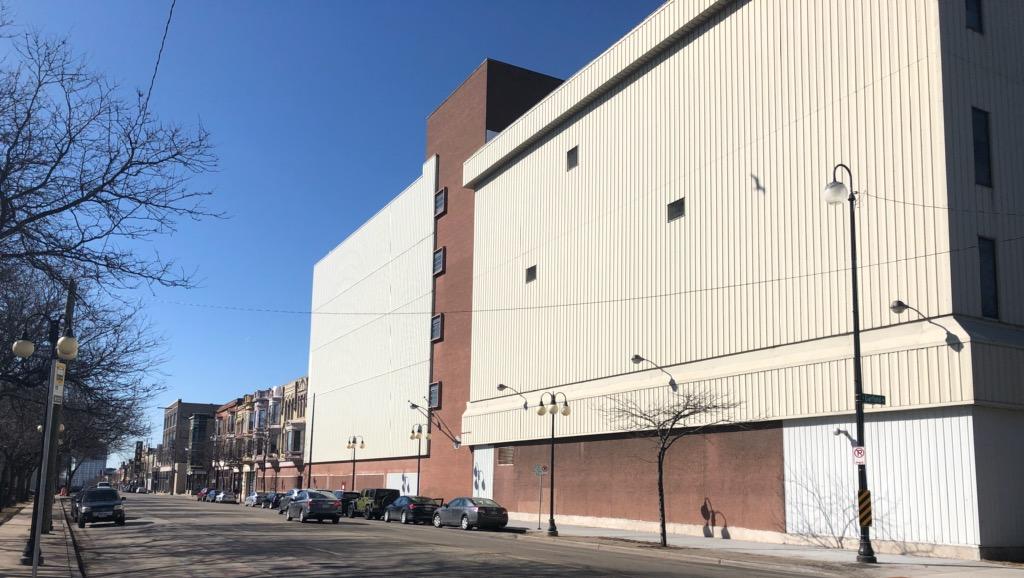Milwaukee, March 26, 2019 – The Medical College of Wisconsin (MCW) and the Greater Milwaukee Foundation have established a joint vision for impact, selected a developer and announced the future neighborhood and home of their community-based partnership as it moves forward into development stage.
The shared vision is “a Milwaukee that is equitable, healthy and thriving for all.” Achieving this vision requires focusing on places where investment has been scarce and supporting people of color, who are disproportionately affected by disparities in the community. Together, the Foundation and MCW will:
- Engage resident and community partnerships.
- Improve social determinants of health.
- Catalyze change that leverages resources and investment.
“This partnership is an extension of our fundamental commitment to supporting people throughout our community in their desire for greater opportunity and a high quality of life,” said Ellen M. Gilligan, president and CEO of the Greater Milwaukee Foundation. “The course of that journey is to be charted together with community, based on values and goals we share. We look forward to that process and to identifying other partners whose goals align.”
“Our support for this initiative is to help shape Milwaukee as one of the healthiest and safest cities in the nation,” said John R. Raymond, Sr., MD, president and chief executive officer of MCW. “Health is largely determined by social factors, including social determinants, genes, behavior, and healthcare. In partnership, we will address determinants of health to benefit communities.”
The partnership, encompassing the initiative formerly known as Flourishing Lives, will enable MCW and the Foundation to bring complementary expertise to bear on a range of strategies to invest in the educational, social and economic well-being and health of people across Milwaukee. The next step will be to host a neighborhood gathering – an opportunity to join with residents of the community for refreshments, conversation and beginning relationships that place their ideas and priorities at the center of forthcoming plans.
The site chosen is in the Halyard Park neighborhood, at 2153 N. Martin Luther King Jr. Drive. The location will be home to MCW’s community engagement programs as well as the new headquarters for the Foundation. Future opportunities for convening space, programming and additional local partners are expected to amplify community impact. The site was once home to Gimbels-Schuster’s Department Store and received major additions in both 1914 and 1950. The natural façade of the historic building will be restored in the redevelopment process.
Royal Capital Group is the chosen development firm for the initiative. The firm led MCW through the discovery phase. Royal Capital Group has deep experience in Brewer's Hill and the surrounding Milwaukee neighborhoods.
Halyard Park offers glimpses of history for both organizations.
The Halyard Park neighborhood is named for Ardie and Wilbur Halyard who, in 1924, established Columbia Savings and Loan, the first such institution owned by and serving African Americans in Milwaukee. It offered people of color the opportunity to establish a mortgage loan for home ownership. In 1974, to commemorate Columbia Savings and Loan’s 50th anniversary, the Wilbur and Ardie A. Halyard Fund was created at the Greater Milwaukee Foundation. The fund provides financial scholarship support to African American students preparing for careers in business or finance. The Halyards continue to be remembered for their pivotal role in Milwaukee’s history and as enduring advocates for improving housing and living conditions for the city’s African American community. The Foundation has a deep history supporting Milwaukee neighborhoods. Specifically in Halyard Park, Harambee and along King Drive, the Foundation and its donors have invested more than $5 million in the last five years alone.
For 34 years, from 1898 to 1932, one of the Medical College of Wisconsin’s predecessor institutions (Wisconsin College of Physicians and Surgeons, which became the Marquette University School of Medicine) was in Halyard Park in a building located just blocks away on the southeast corner of Fourth Street and Reservoir Avenue. At the very top of the building in faded letters it reads “Wisconsin College of Physicians and Surgeons.” It continued there until 1932, when the Cramer Building was opened on the Marquette campus. Next to the medical school was its dispensary (now called outpatient clinics) where medical students observed as faculty physicians treated indigent patients. Across the street from the medical school was St. Joseph’s Hospital, the medical school’s primary teaching hospital.
“This initiative is a place-based investment strategy and a sustained commitment to the community,” said Dr. Raymond. “This isn’t about a building; it’s about the impact that it will have on people’s lives. Collaboration and sustainability will be critical to success.”
“Milwaukee is experiencing a development boom and a rising economy, but that doesn’t mean the benefits are reaching those in our community most in need,” Gilligan said. “Through strong partnerships and an intentional focus on equity, however, we can build on the momentum surging from downtown and work with community to ensure more and more people have access to the opportunity they need to thrive.”
About the Medical College of Wisconsin
With a history dating back to 1893, The Medical College of Wisconsin is dedicated to leadership and excellence in education, patient care, research and community engagement. More than 1,200 students are enrolled in MCW’s medical school and graduate school programs in Milwaukee, Green Bay, and Central Wisconsin. MCW’s School of Pharmacy opened in 2017. A major national research center, MCW is the largest research institution in the Milwaukee metro area and second largest in Wisconsin. In FY2016, faculty received more than $184 million in external support for research, teaching, training and related purposes. This total includes highly competitive research and training awards from the National Institutes of Health (NIH). Annually, MCW faculty direct or collaborate on more than 3,100 research studies, including clinical trials. Additionally, more than 1,500 physicians provide care in virtually every specialty of medicine for more than 525,000 patients annually.
About Greater Milwaukee Foundation:
The Greater Milwaukee Foundation is Wisconsin’s largest community foundation and was among the first established in the world. For more than a century, the Foundation has inspired philanthropy by connecting generous people to community needs that align with their interests. The Foundation was founded on the premise that generosity can unlock an individual’s potential and strengthen the community as a whole for everyone who lives here. We work in partnership with those who are committed to ensuring greater Milwaukee is a vibrant, economically thriving region that comprises welcoming and inclusive communities providing opportunity, prosperity and a high quality of life for all. The Foundation today manages more than $875 million in assets and has awarded nearly $800 million in grants.




